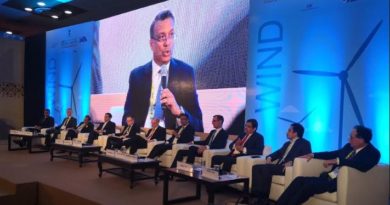Moody’s Report: India to have 18% of renewable energy in electricity generation mix
 Moody's Report: India on right track
Moody's Report: India on right track
Global ratings agency Moody’s Investors Service in its report says that the share of renewable energy in India’s electricity generation mix is likely to rise to around 18 per cent by 2022, from 7.8 per cent at present, as of March 2018. This increase will mainly be a result of the continuous focus on capacity addition from solar and wind.
Moody’s report also added that India is taking positive steps to align its power generation mix with its Nationally Determined Contribution (NDC) commitments under the Paris Climate Agreement.
“Renewable energy’s share of new capacity additions for power generation has been the largest at around 60 per cent over the last two years, while additions to coal-fired generation capacity have slowed sharply,” said Abhishek Tyagi, vice-president and senior analyst, Moody’s Investors Service.
He further lauded the large companies who have also announced plans to make their operations more energy-efficient and source more renewable energy. Indian industrial giants like UltraTech Cement, Mahindra Vehicle Manufacturers Ltd, Mahindra Heavy Engines Ltd, and Godrej Industries Limited and Associate Companies have joined EP100 initiative, which is led by The Climate Group and the Alliance to Save Energy. The initiative, one of many, is a front for corporates to align themselves on the right side of the new energy politics and economics, to ensure that the transition to renewables can be ‘managed’.
According to the Moody’s report, the share of fossil fuel-based power generation capacity is likely to fall to 50-55 per cent by 2022, from 67 per cent currently. With the remaining coming from Hydro.
“This trend in part reflects the fact that wind and solar tariffs are now in most cases either comparable with or lower than domestic coal-based projects,” said Mr Tyagi.
Read: SECI’s 1200 MW Wind Auction rebid generates a low tariff of Rs 2.76
Read: Acme Bids lowest tariff of 2.59 for NTPC’s 2GW Project
The utilisation rate or plant load factor for existing coal-fired capacity has been falling since 2010 and was around a historical low of 59 per cent in FY18, according to the report, while the annual growth in coal-fired capacity is likely to slow to 4-5 per cent over the next five years.
Mr Tyagi, however, opined that the renewable energy sector faces challenges, despite its strong growth prospects. “The renewable energy sector faces challenges, including the weak credit profiles of many off-takers, which are typically state-owned distribution companies, while India’s renewable energy policy framework continues to evolve,” he said.
In addition, he added that sharply expanding renewable power generation capacity would require similar growth in the transmission infrastructure for the efficient and inter-regional transmission of electricity.
Read: Intent Versus Reality. The Renewable Future and the Doubling of India’s Oil Demand by 2040
India is targeting 40 per cent of cumulative capacity from non-fossil fuel-based sources by 2030, in line with its NDC commitments, which compares with total non-fossil fuel power generation capacity (including nuclear) of 35 per cent as of June. Like many other countries which have realised the new reality, we believe that this number is too conservative, and if anything India needs to push harder for a more ambitious goal here.




